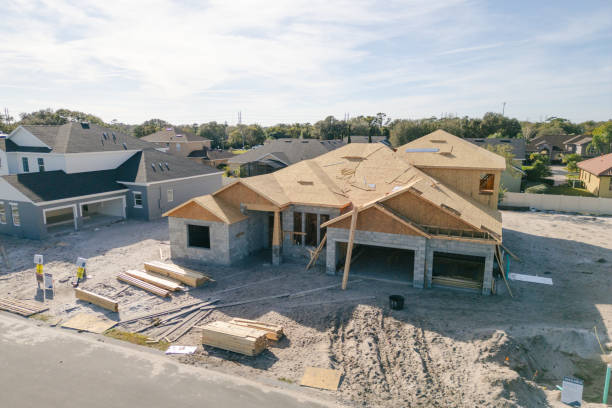Los Angeles is once again at a crossroads — this time, over how much rent can rise in its rent-stabilized apartments. The City Council is weighing a proposal to cap annual rent increases at just 3%, a major shift that’s already sparking tension between landlords, tenants, and developers.
To some, it’s a long-overdue protection for tenants struggling to stay housed. To others, it’s a sign that Los Angeles is becoming an increasingly hostile environment for investment — especially in a city already known for high costs, long permitting timelines, and regulatory red tape.
Let’s unpack what this could mean for everyone involved — and why consultants, developers, and policymakers should be paying close attention.
A Policy That Could Reshape Investment Decisions
If approved, the 3% rent cap would represent the first major change to L.A.’s Rent Stabilization Ordinance since 1985. That’s not a small adjustment — it’s a fundamental shift in how housing revenue and long-term value are calculated.
For landlords, it means a tighter squeeze on margins. Maintenance costs, insurance premiums, and property taxes have climbed dramatically in recent years. If rents can’t rise accordingly, many owners fear they’ll have to cut back on maintenance or defer improvements just to stay solvent.
But the ripple effect doesn’t stop there.
For developers — especially those planning new multi-family or mixed-use projects — the math behind every pro forma and feasibility study changes.
How Rent Caps Distort Feasibility Studies
When consultants like JDJ analyze a potential housing project, they use a combination of:
-
Projected rental income
-
Operating expenses
-
Financing costs
-
Construction and soft costs
-
Expected appreciation or resale value
A 3% annual rent cap doesn’t just affect existing stabilized units — it creates a psychological barrier for investors evaluating the long-term profitability of building new rental housing.
Even though newly built units often aren’t immediately subject to rent stabilization, investors read the policy as a signal of future regulation risk.
That perception can dampen enthusiasm for new projects or push developers to pivot toward for-sale units, mixed-use hotels, or ADU developments, where rent caps don’t apply.
The Landlord’s Dilemma: Risk Without Reward
Let’s take the case of a small landlord who owns a triplex in South L.A. Their annual costs — from maintenance to property tax — might rise 5–8% each year. Under the proposed ordinance, their income could only rise 3%.
That math doesn’t work forever.
Many small property owners, especially those who invested in older buildings under rent stabilization, could see negative cash flow within just a few years.
Some may sell. Others may stop reinvesting in upkeep. And some might even consider redeveloping or converting their properties — if zoning allows — into projects exempt from rent control.
That’s where consultants like JDJ come in.
Understanding the zoning feasibility, entitlement pathways, and redevelopment potential of older rent-stabilized sites is becoming a key survival strategy for landlords trying to stay financially viable under new restrictions.
Developers’ Growing Hesitation
For developers, the rent cap debate feeds into a larger concern: Can Los Angeles still attract private capital for housing?
Between rising construction costs, new environmental and safety restrictions, and the ongoing challenges of navigating city approvals, the profit margins on rental housing were already thin.
Now, with a 3% rent cap on the horizon, the risk-adjusted returns for multifamily projects could look even less appealing.
As one local developer put it privately, “Why would I fight through 18 months of plan check, CEQA review, and city hearings — just to build a project where my revenue might be capped below inflation?”
That sentiment, whether fair or not, is spreading. And when developers step back, the entire housing pipeline slows down — which ironically makes housing even less affordable in the long run.
Tenant Advocates See It Differently
Tenant groups, on the other hand, see this proposal as a necessary correction to an unbalanced market. With more than half of L.A. tenants spending over 30% of their income on rent, they argue that stability matters more than investor returns.
And they’re not wrong — housing affordability is the moral and political issue of our time.
But the question is whether this particular policy will fix the problem, or simply shift it downstream by discouraging future development and reducing supply.
The Broader Urban Planning Impact
From an urban planning perspective, policies like this don’t exist in a vacuum. They influence everything from neighborhood density to redevelopment timelines.
Developers start making different decisions:
-
Fewer market-rate rentals
-
More luxury condos or commercial conversions
-
Greater interest in SB9 lot splits or ADU development, where regulations are lighter
For the city, this means the kind of mid-income rental stock — the very backbone of L.A.’s housing ecosystem — could decline further.
That’s a serious problem if Los Angeles hopes to meet its Regional Housing Needs Assessment (RHNA) goals and build an inclusive, sustainable housing future.
Why This Matters for Consulting and Feasibility Work
For land-use consultants, entitlement strategists, and zoning experts, this proposed rent cap changes the conversation.
Now, when advising clients, it’s not enough to just calculate unit count and FAR. You have to model:
-
Revenue scenarios under different rent control outcomes
-
Policy risk (what happens if rent caps expand to new buildings?)
-
Alternative project types (for-sale housing, mixed-use, or adaptive reuse)
In other words, feasibility is no longer just a numbers game — it’s a policy game.
At JDJ Consulting, this kind of scenario planning is already part of every project feasibility review. Understanding the political climate, economic incentives, and long-term regulatory trends is what separates a viable project from a stalled one.
What’s Next for Los Angeles Housing Policy
Whether the rent cap passes or not, one thing is certain: Los Angeles is heading toward more regulation, not less.
From sustainability mandates to anti-displacement measures, city policy is tightening — and that means developers, investors, and consultants need to stay ahead of the curve.
Here’s what might come next:
-
Expansion of rent stabilization to newer properties
-
New incentives for affordable housing production (through density bonuses and tax abatements)
-
Stricter enforcement of habitability and safety standards
-
Continued debate over how to balance affordability with investment feasibility
For consultants, this is both a challenge and an opportunity — to guide clients through complexity with data-driven, policy-aware strategies.
A Path Forward: Balance Over Ideology
It’s easy to frame this issue as tenants vs. landlords, but that misses the bigger picture. Los Angeles needs both.
A stable housing market requires tenant protections and developer confidence. Without one, the other collapses.
If the city truly wants long-term affordability, it must pair rent caps with:
-
Streamlined permitting and faster approvals
-
Predictable entitlement processes
-
Incentives for adaptive reuse and infill development
-
Public-private partnerships to expand affordable housing supply
Otherwise, policies meant to protect renters today may limit their housing choices tomorrow.
Final Take: A Test of L.A.’s Growth Mindset
Los Angeles has always been a city of reinvention. But every reinvention depends on investment — and investment depends on confidence.
A 3% rent cap might bring short-term relief to some tenants, but unless it’s part of a larger, balanced housing strategy, it risks chilling the very development the city needs most.
Developers, consultants, and city officials must work together — not in opposition — to design policies that protect renters and keep Los Angeles a place worth building in.
Because at the end of the day, the goal isn’t just affordable housing. It’s sustainable growth — for everyone.
Article courtesy: Los Angeles Times
Check more stories here: https://jdj-consulting.com/blogs/






